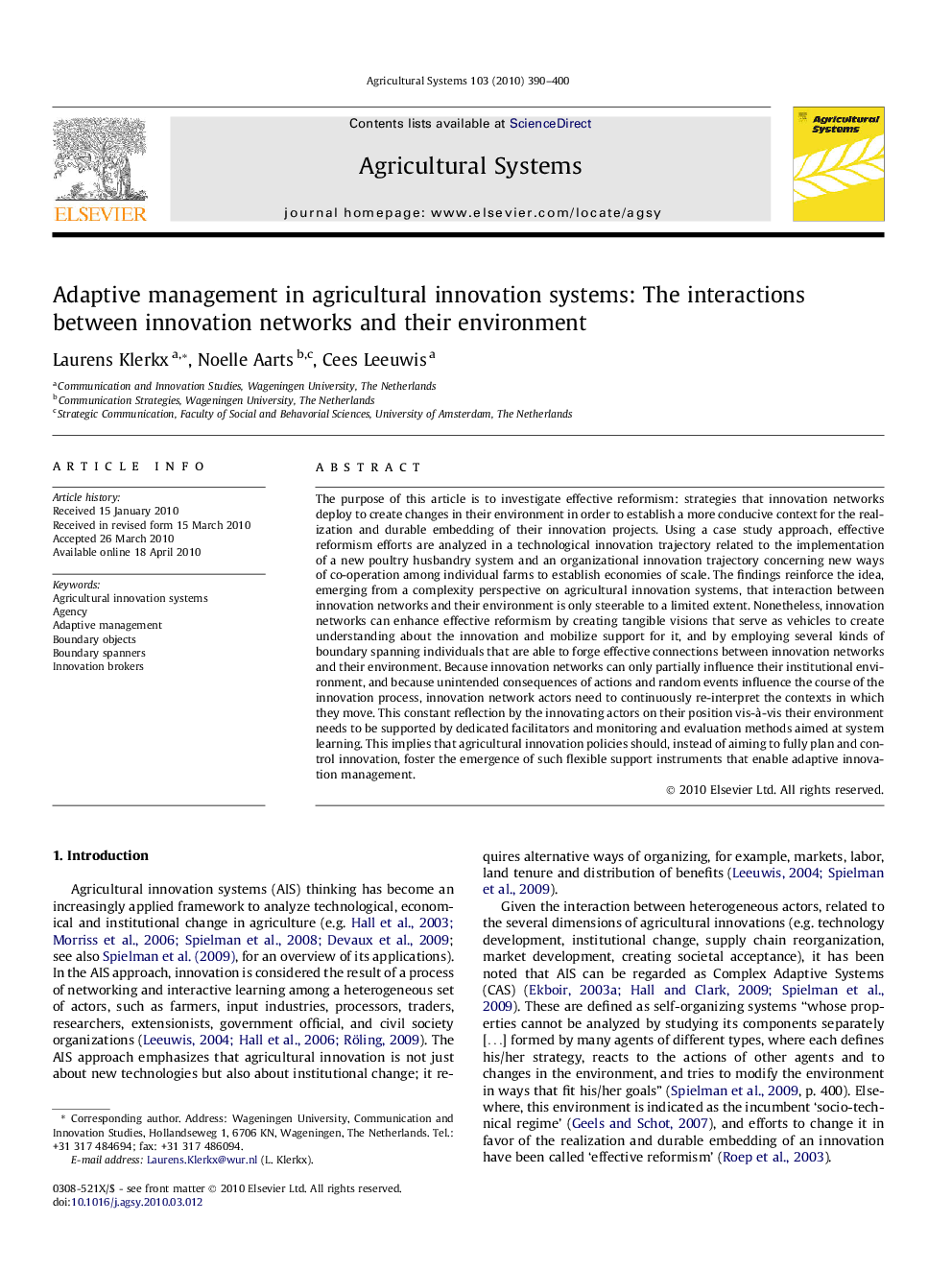| Article ID | Journal | Published Year | Pages | File Type |
|---|---|---|---|---|
| 4491595 | Agricultural Systems | 2010 | 11 Pages |
The purpose of this article is to investigate effective reformism: strategies that innovation networks deploy to create changes in their environment in order to establish a more conducive context for the realization and durable embedding of their innovation projects. Using a case study approach, effective reformism efforts are analyzed in a technological innovation trajectory related to the implementation of a new poultry husbandry system and an organizational innovation trajectory concerning new ways of co-operation among individual farms to establish economies of scale. The findings reinforce the idea, emerging from a complexity perspective on agricultural innovation systems, that interaction between innovation networks and their environment is only steerable to a limited extent. Nonetheless, innovation networks can enhance effective reformism by creating tangible visions that serve as vehicles to create understanding about the innovation and mobilize support for it, and by employing several kinds of boundary spanning individuals that are able to forge effective connections between innovation networks and their environment. Because innovation networks can only partially influence their institutional environment, and because unintended consequences of actions and random events influence the course of the innovation process, innovation network actors need to continuously re-interpret the contexts in which they move. This constant reflection by the innovating actors on their position vis-à-vis their environment needs to be supported by dedicated facilitators and monitoring and evaluation methods aimed at system learning. This implies that agricultural innovation policies should, instead of aiming to fully plan and control innovation, foster the emergence of such flexible support instruments that enable adaptive innovation management.
